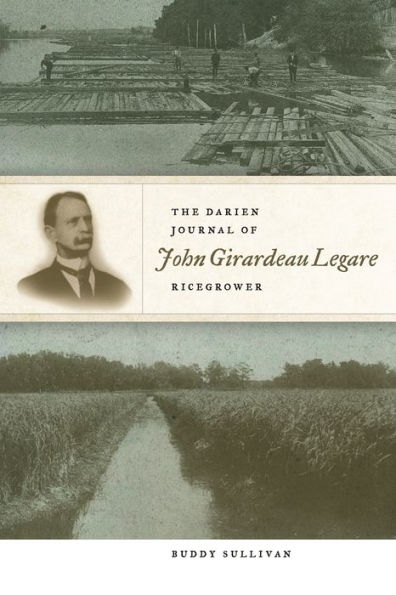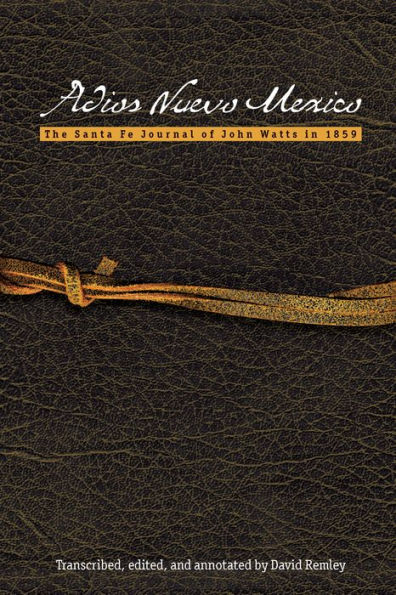Home
The Darien Journal of John Girardeau Legare, Ricegrower
Barnes and Noble
Loading Inventory...
The Darien Journal of John Girardeau Legare, Ricegrower in Bloomington, MN
Current price: $126.95


The Darien Journal of John Girardeau Legare, Ricegrower in Bloomington, MN
Current price: $126.95
Loading Inventory...
Size: Hardcover
In 1877, John Girardeau Legare of Adams Run, South Carolina, arrived in Darien on the Georgia tidewater. Legare managed Darien-area rice plantations, first at Generals Island, then at Champneys. Nearby was Butler’s Island, made famous by Fanny Kemble Butler in her antebellum
Journal of a Residence on a Georgian Plantation
. Legare also served as the clerk of the city of Darien during the first three decades of the twentieth century, maintaining detailed records of public business and documenting local commercial and civic affairs.
Almost to the day of his death in 1932, Legare kept a journal containing his observations and commentary on the development of Darien as a center for timber exports and the gradual decline of the rice industry. South Carolina and Georgia led the world in rice production in the mid-nineteenth century, and Legare’s detailed accounts of planting and management provide one of the outstanding contemporary sources for what was becoming a vanishing way of life in tidewater Georgia.
Legare’s journals are a microcosmic history of Darien and its environs during a time that was perhaps the most compelling in the town’s history. The industrial development of Darien in the postbellum era was the essence of Henry Grady’s vision of the progressive New South, a factor not lost on Legare. He reflects on the difficulties associated with rice planting; Darien’s soaring, then plummeting, fortunes with yellow pine timber; prominent community members; and the development of local railroads. Legare records these developments against the larger backdrop of America, as his journal contains many observations on contemporary national events.
Buddy Sullivan has placed the
Journal
in context with an introduction and comprehensive endnotes identifying the people and events referred to by Legare. There is also considerable African American history in the volume, as reflected both in Legare’s writings and in the editor’s introduction and supplementary notes.
Journal of a Residence on a Georgian Plantation
. Legare also served as the clerk of the city of Darien during the first three decades of the twentieth century, maintaining detailed records of public business and documenting local commercial and civic affairs.
Almost to the day of his death in 1932, Legare kept a journal containing his observations and commentary on the development of Darien as a center for timber exports and the gradual decline of the rice industry. South Carolina and Georgia led the world in rice production in the mid-nineteenth century, and Legare’s detailed accounts of planting and management provide one of the outstanding contemporary sources for what was becoming a vanishing way of life in tidewater Georgia.
Legare’s journals are a microcosmic history of Darien and its environs during a time that was perhaps the most compelling in the town’s history. The industrial development of Darien in the postbellum era was the essence of Henry Grady’s vision of the progressive New South, a factor not lost on Legare. He reflects on the difficulties associated with rice planting; Darien’s soaring, then plummeting, fortunes with yellow pine timber; prominent community members; and the development of local railroads. Legare records these developments against the larger backdrop of America, as his journal contains many observations on contemporary national events.
Buddy Sullivan has placed the
Journal
in context with an introduction and comprehensive endnotes identifying the people and events referred to by Legare. There is also considerable African American history in the volume, as reflected both in Legare’s writings and in the editor’s introduction and supplementary notes.
In 1877, John Girardeau Legare of Adams Run, South Carolina, arrived in Darien on the Georgia tidewater. Legare managed Darien-area rice plantations, first at Generals Island, then at Champneys. Nearby was Butler’s Island, made famous by Fanny Kemble Butler in her antebellum
Journal of a Residence on a Georgian Plantation
. Legare also served as the clerk of the city of Darien during the first three decades of the twentieth century, maintaining detailed records of public business and documenting local commercial and civic affairs.
Almost to the day of his death in 1932, Legare kept a journal containing his observations and commentary on the development of Darien as a center for timber exports and the gradual decline of the rice industry. South Carolina and Georgia led the world in rice production in the mid-nineteenth century, and Legare’s detailed accounts of planting and management provide one of the outstanding contemporary sources for what was becoming a vanishing way of life in tidewater Georgia.
Legare’s journals are a microcosmic history of Darien and its environs during a time that was perhaps the most compelling in the town’s history. The industrial development of Darien in the postbellum era was the essence of Henry Grady’s vision of the progressive New South, a factor not lost on Legare. He reflects on the difficulties associated with rice planting; Darien’s soaring, then plummeting, fortunes with yellow pine timber; prominent community members; and the development of local railroads. Legare records these developments against the larger backdrop of America, as his journal contains many observations on contemporary national events.
Buddy Sullivan has placed the
Journal
in context with an introduction and comprehensive endnotes identifying the people and events referred to by Legare. There is also considerable African American history in the volume, as reflected both in Legare’s writings and in the editor’s introduction and supplementary notes.
Journal of a Residence on a Georgian Plantation
. Legare also served as the clerk of the city of Darien during the first three decades of the twentieth century, maintaining detailed records of public business and documenting local commercial and civic affairs.
Almost to the day of his death in 1932, Legare kept a journal containing his observations and commentary on the development of Darien as a center for timber exports and the gradual decline of the rice industry. South Carolina and Georgia led the world in rice production in the mid-nineteenth century, and Legare’s detailed accounts of planting and management provide one of the outstanding contemporary sources for what was becoming a vanishing way of life in tidewater Georgia.
Legare’s journals are a microcosmic history of Darien and its environs during a time that was perhaps the most compelling in the town’s history. The industrial development of Darien in the postbellum era was the essence of Henry Grady’s vision of the progressive New South, a factor not lost on Legare. He reflects on the difficulties associated with rice planting; Darien’s soaring, then plummeting, fortunes with yellow pine timber; prominent community members; and the development of local railroads. Legare records these developments against the larger backdrop of America, as his journal contains many observations on contemporary national events.
Buddy Sullivan has placed the
Journal
in context with an introduction and comprehensive endnotes identifying the people and events referred to by Legare. There is also considerable African American history in the volume, as reflected both in Legare’s writings and in the editor’s introduction and supplementary notes.

















